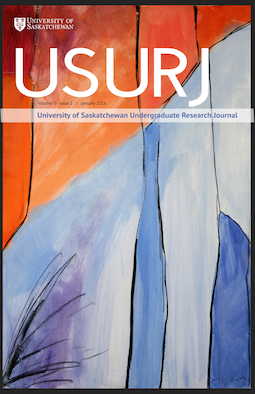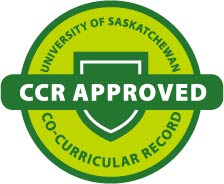Comparison of standard and organic pesticides as well as herbal products for control of insect pests of cabbage (Brassica oleracea) in Saskatchewan
DOI:
https://doi.org/10.32396/usurj.v3i1.241Keywords:
cabbage, insecticides, organic agriculture, Delia radicum, Lepidoptera, PhyllotretaAbstract
Many insect pests can potentially damage cabbage (Brassica oleracea) grown in Saskatchewan. Root maggots (Delia spp), flea beetles (Phyllotreta spp) and cabbage worms (Order: Lepidoptera) are the main concerns. The objective of this project was to assess the potential to use of companion planted herbs or herbal essential oils as control methods for these pests. Standard synthetic pesticides were used as a check treatment. Organic pesticides and a row cover were also tested and compared to an untreated control. The herbal treatments were garlic or thyme plants interplanted with the cabbage crop along with foliar sprays of garlic or thyme oil. The pest control treatments were compared in trials using both transplanted and direct seeded cabbage. The standard and organic pesticide regimes both effectively controlled all three of the insect pests, and resulted in similar head yields in both the transplanted and direct seeded cabbage crops. The row cover successfully prevented insect damage but created problems with weed control and required extra materials and labour to construct. The microclimate created by the row cover decreased growth of the direct seeded crop. None of the herbal products provided effective control of any of the insect pests of cabbage. In conclusion, cabbage can be successfully grown in Saskatchewan with minimal losses to insects using either standard synthetic or organic pesticides, but the herbal were not effective in the form and rates tested in this project.Downloads
Published
Issue
Section
License
Articles: USURJ’s current Publication Agreements apply a Creative Commons Attribution-NonCommercial License (CC-BY-NC) by default. The CC BY-NC license lets others remix, tweak, and build upon work non-commercially. The author(s) can choose a different CC license, as outlined in https://creativecommons.org/about/cclicenses/. Please see the PDF for each article to determine what license is applied to that article. Author(s) can also request to reserve all copyright (All Rights Reserved). If there is no indication for articles published before September 2020, assume the author retains all rights beyond those necessary for publication by USURJ. All articles published after September 2020 will apply one of the aforementioned CC licenses. See the Publication Agreement under the Submission Preparation Checklist or Author Guidelines for more information. Artwork: All copyright for the original artwork remains with the artist unless they wish to apply a Creative Commons (CC) license to the artwork. Please see the PDF for each artwork to determine what license is applied to that artwork.







